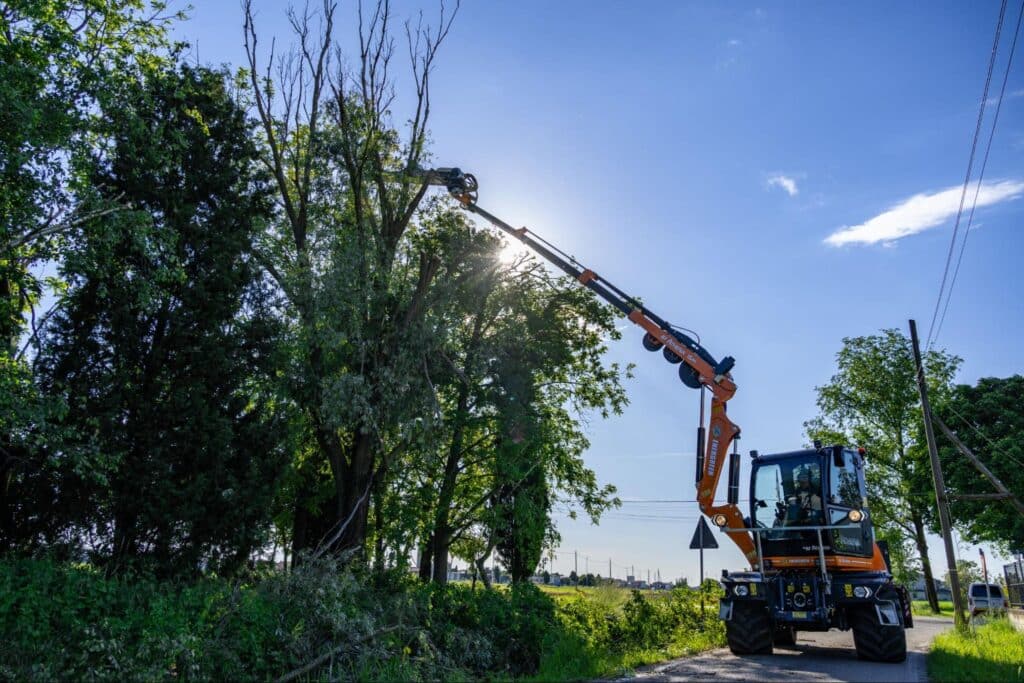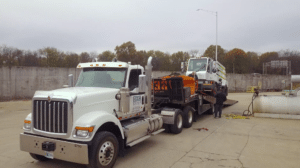Imagine overseeing a vast land clearing project from a secure control center instead of engaging directly with steep slopes or dense vegetation. This modern approach can reduce physical strain on workers and help improve operational pace by mitigating some of the challenges posed by traditional methods. Conventional clearing techniques often involve labor-intensive manual tasks and heavy, manually operated machinery.
Such methods can expose crews to hazardous conditions and impose considerable physical strain, which may lead to slower progress and indirectly affect project timelines and labor costs. Today’s remote-controlled equipment is transforming the land clearing landscape by offering a safer and more precise alternative.
In this article, we examine how remote-controlled equipment is changing the industry. We detail the technology’s benefits, discuss its practical applications, and review considerations for safely managing diverse terrains. By embracing these innovative solutions—and by operating them in accordance with environmental guidelines—your land clearing projects can become more efficient and sustainable.
The Challenges of Traditional Land Clearing
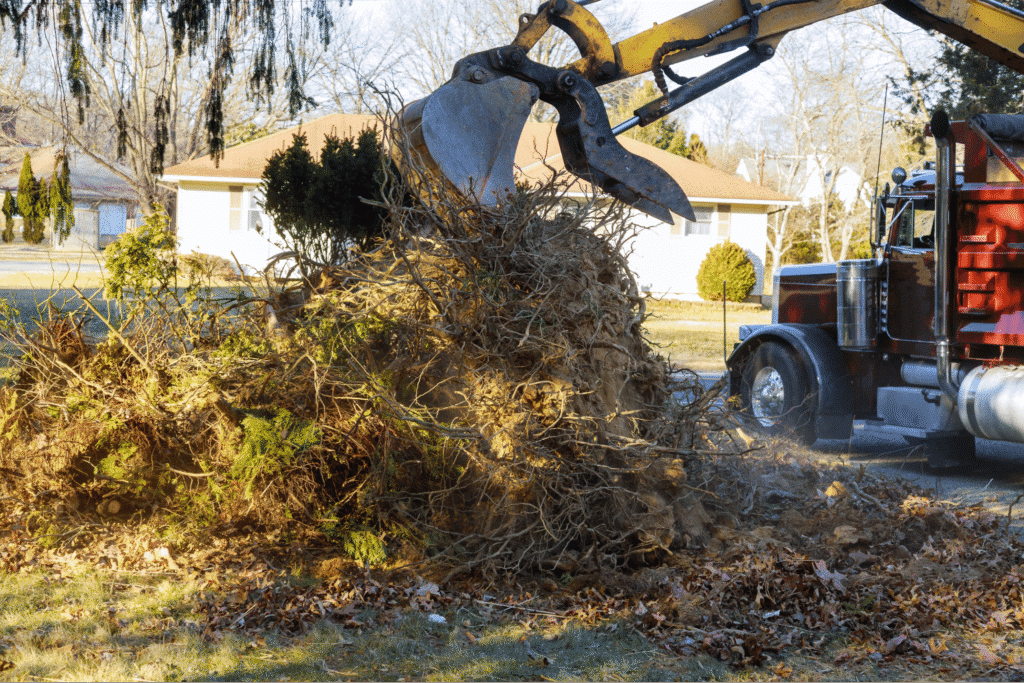
Conventional land clearing typically relies on large, manually operated machinery and significant manpower. These methods, which often involve heavy equipment working on steep or uneven terrain, can expose crews to hazardous conditions and considerable physical strain.
This labor-intensive approach not only increases the risk of worker fatigue and accidents but may also contribute indirectly to slower project progress and potential cost increases. Although direct evidence linking unsafe environments with higher project costs is limited, the inherent challenges of physical labor and slower operations are well documented.
Technological Advancements in Land Clearing Equipment
Modern remote-controlled land clearing equipment features intuitive interfaces that enhance both safety and efficiency. Operators can adjust machine settings in real time from a safe distance, aided by sensor-driven feedback regarding terrain conditions and obstacles. Many systems are built with advanced hydraulics and integrated safety features that enable operators to handle challenging terrains more effectively. It is important to note, however, that while these advanced features improve operational control, the overall environmental impact during land clearing depends on the operator’s practices and adherence to environmental management guidelines.
Automation capabilities similar to innovations seen in camera inspection systems support repetitive tasks and help minimize human error, further streamlining operations and potentially reducing fuel consumption and overall wear. As technology advances, the combination of smart controls, standardized platforms, and enhanced attachments continues to make remote-controlled systems increasingly robust and user-friendly.
Key Benefits of Remote-Controlled Equipment
Remote-controlled equipment offers several compelling advantages:
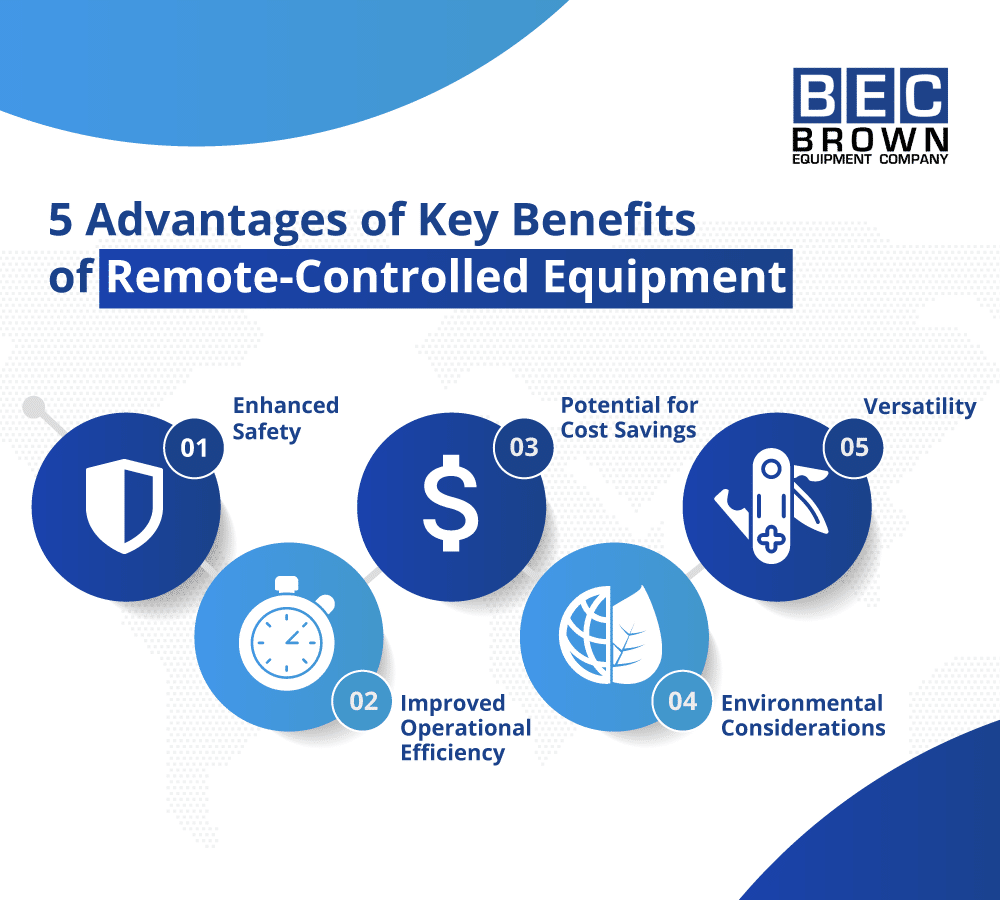
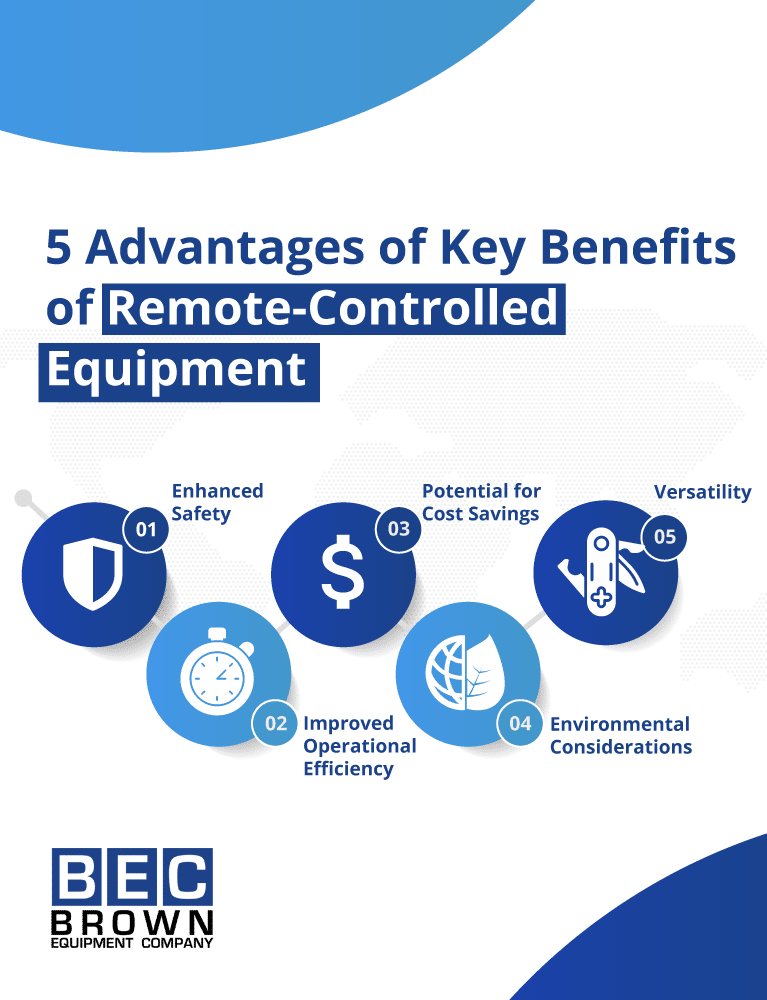
- Enhanced Safety: Operators control machinery from a protected location, reducing direct exposure to potentially hazardous environments. This benefit is particularly significant in areas with challenging terrain or adverse conditions.
- Improved Operational Efficiency: The precision allowed by remote-controlled systems contributes to smoother workflows and faster overall project progress.
- Potential for Cost Savings: Although traditional methods may experience slower progress due to physical challenges, remote-controlled equipment can help offset such delays through reduced direct labor requirements and lower fuel consumption. Comprehensive maintenance and repairs further optimize operational uptime.
- Environmental Considerations: With more targeted clearing, operators have improved control over vegetation removal. While the advanced features of modern equipment assist in managing challenging terrain, the degree of environmental impact can depend largely on how these tools are employed and managed according to environmental standards.
- Versatility: With modular attachments, a single remote-controlled carrier can be configured for multiple tasks, potentially reducing the need for several specialized machines.
Ongoing research and case studies are continually refining our understanding of remote-controlled solutions, encouraging operators to adopt practices that balance efficiency with environmental stewardship.
Potential Drawbacks or Considerations
Despite their many advantages, remote-controlled systems have some limitations:
- Higher Initial Costs: Advanced technology and specialized engineering may result in increased upfront expenditures.
- Training Requirements: Operators require proper training to fully leverage the safety and control features that these systems offer.
- Maintenance Challenges: Some models may necessitate specialized repairs and parts, possibly complicating upkeep.
- Task Suitability: Not every land clearing task is appropriate for remote operation—some tasks might still require hands-on intervention.
Considering these factors can help decision-makers weigh short-term investments against long-term benefits, leading to more informed equipment selection and deployment strategies.
Types of Remote-Controlled and Land Clearing Equipment
Remote-Controlled Slope Mowers
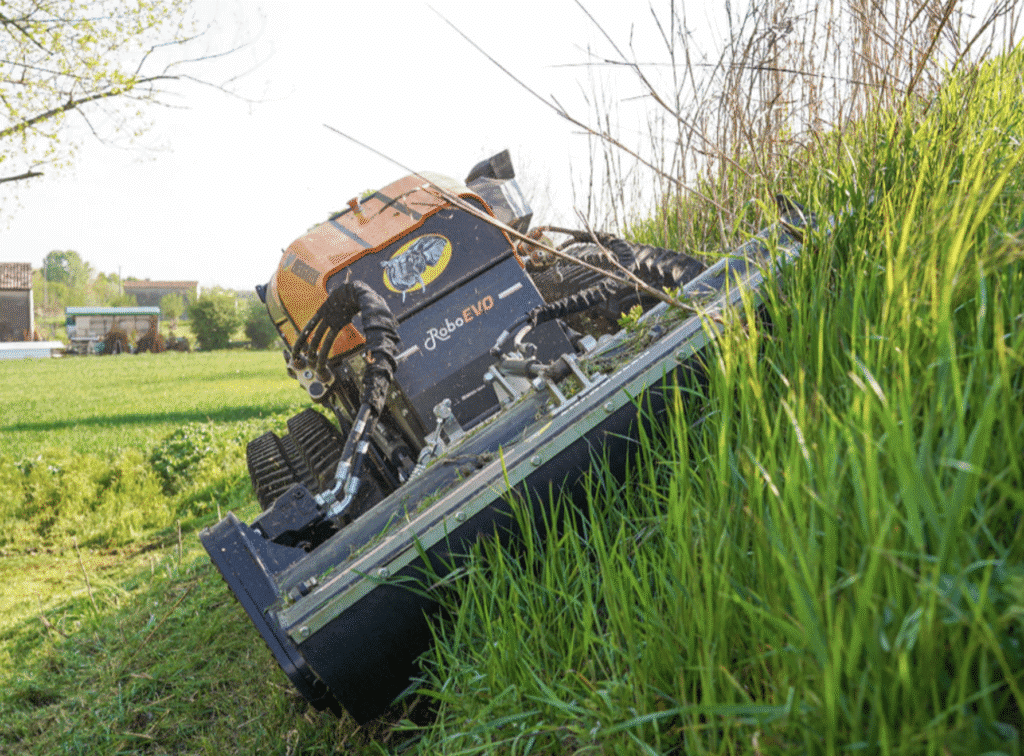
Purpose-built for steep hillsides and unstable grounds, remote-controlled slope mowers allow operators to tackle areas that might be too dangerous or time-consuming with manual methods. Their designs typically include low centers of gravity and enhanced traction systems to ensure stability.
Remote-Controlled Tool Carriers

These versatile machines support a range of attachments—from mulching heads to cutting blades. For example, some remote-controlled tool carriers are known for their powerful hydraulic systems and ergonomic controls, enabling them to efficiently operate in challenging terrains. However, while these advanced features enhance control and potentially reduce environmental impacts, such results depend on careful and sustainable operational practices.
Land Clearing Attachments
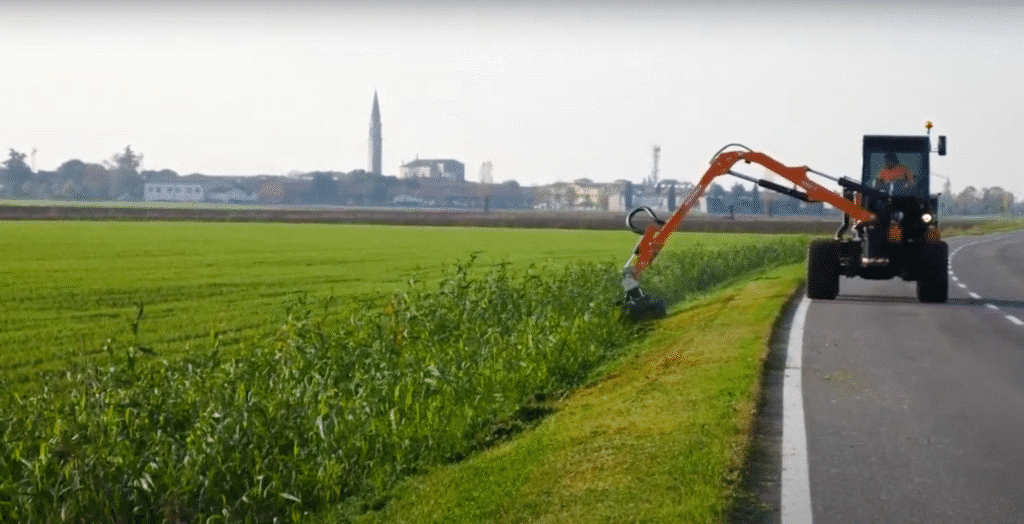
Specialized attachments allow remote-controlled machines to perform a variety of tasks:
- Forestry Heads and Shredders: Designed for heavier vegetation, these attachments can process brush and small trees while selectively preserving certain vegetation.
- Buckets and Saws: Useful for small-scale excavation and precision cutting, these tools enhance operational flexibility in varied conditions.
By judiciously selecting carriers and attachments, project teams can create equipment configurations tailored to specific site conditions.
Have you ever been in a situation where you needed to boom mow on both the right and left sides?
This video below showcases an example of the innovative orbital boom in action, designed to provide maximum efficiency and versatility for your mowing needs. This Kommunal Boom Mower by Energreen offers a boom arm system that significantly expands your area of reach, ensuring no spot is left untouched.
Practical Applications of Remote-Controlled Equipment
Municipal Applications
Many municipalities manage multiple maintenance responsibilities, from snow removal to vegetation control around public infrastructure. Some local governments have reported fewer on-site incidents and improved resource management after adopting remote-controlled systems. Although direct evidence linking these outcomes to remote-controlled equipment is limited, such anecdotal observations align with broader trends of increased workplace safety and efficiency.
Construction and Contractor Projects
On large construction sites, remote-controlled systems can expedite land preparation while reducing the physical demands on workers. Greater precision and control help manage work in hazardous or hard-to-reach locations, contributing to safer and more punctual project execution.
Utility and Infrastructure Maintenance
Maintenance of utility infrastructure, including power lines and pipeline routes, involves clearing vegetation to prevent accidental damage. Remote-controlled equipment adds precision and safety to these operations by minimizing the need for workers in dangerous proximity to critical assets.
Environmental Management and Conservation
Environmentally focused agencies and private groups may use remote-controlled systems for selective vegetation removal, such as targeting invasive species while preserving native flora. This targeted approach supports more sustainable land management, though the extent of environmental impact still depends on the specific techniques implemented.
Enhancing ROI and Operational Sustainability
Adopting remote-controlled equipment offers advantages that can improve return on investment by reducing labor intensity, fuel consumption, and downtime. Advanced systems with intuitive controls often extend equipment lifespan and contribute to overall project efficiency. Additionally, periodic reconditioning of older machinery allows continued performance improvements, while the precision-enabled clearing helps minimize unnecessary damage to surrounding ecosystems.
Some industry professionals have noted improvements in on-site safety and resource allocation, particularly in local government projects, though the evidence remains largely anecdotal. As these machines continue to evolve, broader acceptance and further innovations in remote-controlled technology are anticipated.
Simplified Technical Explanations for Broader Readability
Understanding the core technology behind remote-controlled equipment does not require extensive technical expertise:
- Sensor Technology: Sensors act as the machines’ “eyes,” scanning and analyzing terrain in real time to guide safe operation.
- User-Friendly Controls: Modern remotes, often featuring digital displays and straightforward interfaces, streamline operation, requiring minimal training for effective use.
- Automation and Precision: Automated adjustments enable consistent performance throughout the workload, contributing to predictable project outcomes.
These features help teams benefit from remote-controlled solutions regardless of their technical backgrounds.
Streamline Land Clearing with Modern Equipment Solutions
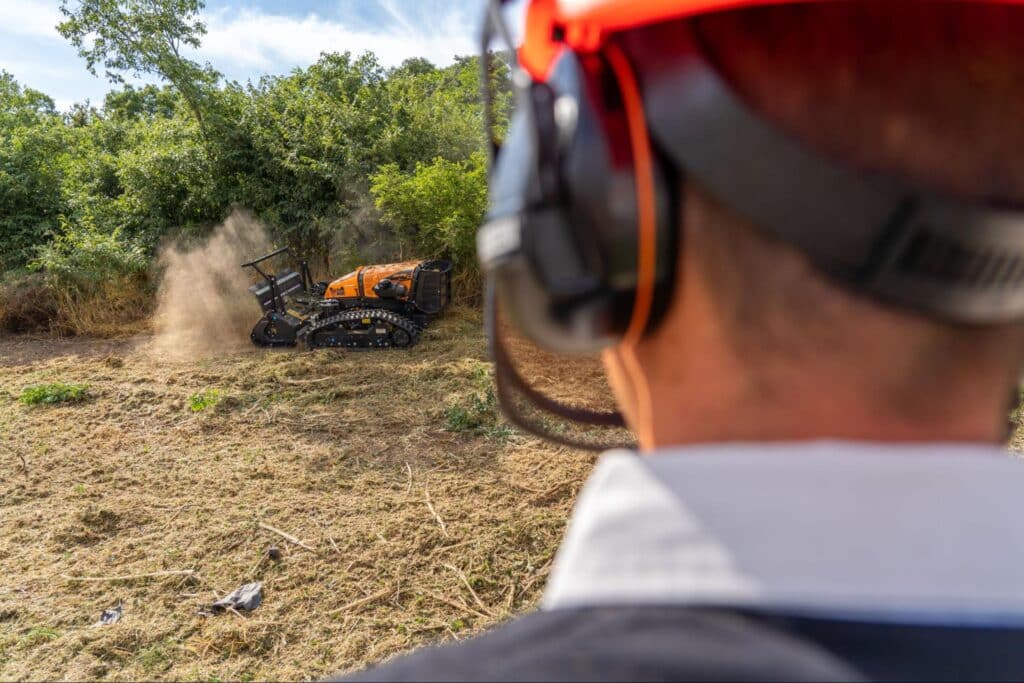
Remote-controlled equipment is reshaping the landscape of land clearing by offering innovative solutions that improve operator safety, enhance precision, and support more sustainable project management. Although traditional methods have been associated with significant physical demands and potential hazards that may indirectly affect project timelines and costs, modern remote-controlled systems and vegetation maintenance equipment promise a more controlled and efficient approach. Some reports even suggest additional benefits such as improved on-site safety and better resource management in certain applications, though these observations remain partially anecdotal.
Whether you represent a municipality, a construction contractor, or an infrastructure maintenance team, tools like innovative remote-controlled solutions offer a forward-thinking approach to addressing the challenges of conventional land clearing. Ready to experience these advancements firsthand? Contact Brown Equipment Company today for a free on-site demonstration and discover how remote-controlled land clearing technologies can elevate your land clearing operations.
